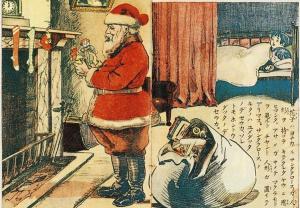| Author: | Charlotte Mary Yonge | ISBN: | 9781465552037 |
| Publisher: | Library of Alexandria | Publication: | March 8, 2015 |
| Imprint: | Language: | English |
| Author: | Charlotte Mary Yonge |
| ISBN: | 9781465552037 |
| Publisher: | Library of Alexandria |
| Publication: | March 8, 2015 |
| Imprint: | |
| Language: | English |
The country we now know as France is the tract of land shut in by the British Channel, the Bay of Biscay, the Pyrenees, the Mediterranean, and the Alps. But this country only gained the name of France by degrees. In the earliest days of which we have any account, it was peopled by the Celts, and it was known to the Romans as part of a larger country which bore the name of Gaul. After all of it, save the north-western moorlands, or what we now call Brittany, had been conquered and settled by the Romans, it was overrun by tribes of the great Teutonic race, the same family to which Englishmen belong. Of these tribes, the Goths settled in the provinces to the south; the Burgundians, in the east, around the Jura; while the Franks, coming over the rivers in its unprotected north-eastern corner, and making themselves masters of a far wider territory, broke up into two kingdoms—that of the Eastern Franks in what is now Germany, and that of the Western Franks reaching from the Rhine to the Atlantic. These Franks subdued all the other Teutonic conquerors of Gaul, while they adopted the religion, the language, and some of the civilization of the Romanized Gauls who became their subjects. Under the second Frankish dynasty, the Empire was renewed in the West, where it had been for a time put an end to by these Teutonic invasions, and the then Frankish king, Charles the Great, took his place as Emperor at its head. But in the time of his grandsons the various kingdoms and nations of which the Empire was composed, fell apart again under different descendants of his.
The country we now know as France is the tract of land shut in by the British Channel, the Bay of Biscay, the Pyrenees, the Mediterranean, and the Alps. But this country only gained the name of France by degrees. In the earliest days of which we have any account, it was peopled by the Celts, and it was known to the Romans as part of a larger country which bore the name of Gaul. After all of it, save the north-western moorlands, or what we now call Brittany, had been conquered and settled by the Romans, it was overrun by tribes of the great Teutonic race, the same family to which Englishmen belong. Of these tribes, the Goths settled in the provinces to the south; the Burgundians, in the east, around the Jura; while the Franks, coming over the rivers in its unprotected north-eastern corner, and making themselves masters of a far wider territory, broke up into two kingdoms—that of the Eastern Franks in what is now Germany, and that of the Western Franks reaching from the Rhine to the Atlantic. These Franks subdued all the other Teutonic conquerors of Gaul, while they adopted the religion, the language, and some of the civilization of the Romanized Gauls who became their subjects. Under the second Frankish dynasty, the Empire was renewed in the West, where it had been for a time put an end to by these Teutonic invasions, and the then Frankish king, Charles the Great, took his place as Emperor at its head. But in the time of his grandsons the various kingdoms and nations of which the Empire was composed, fell apart again under different descendants of his.















